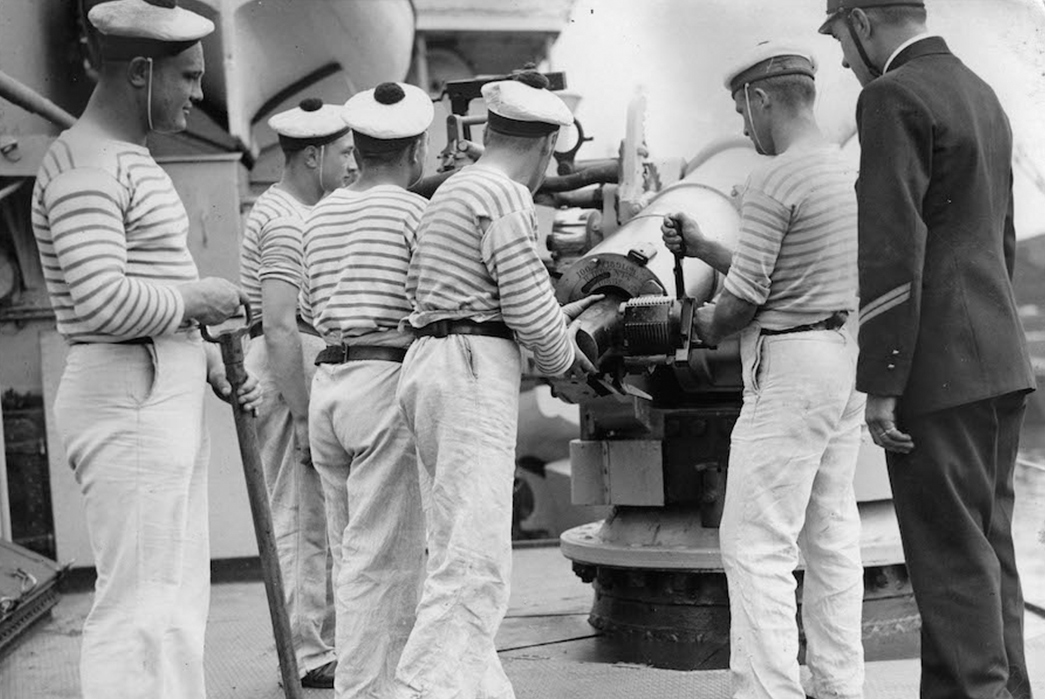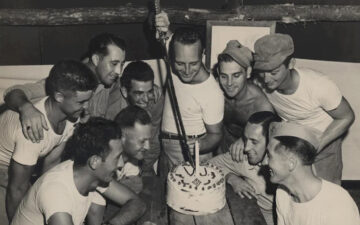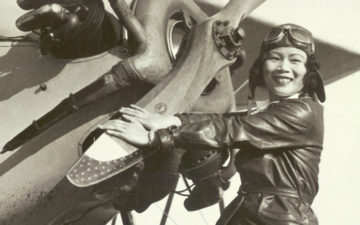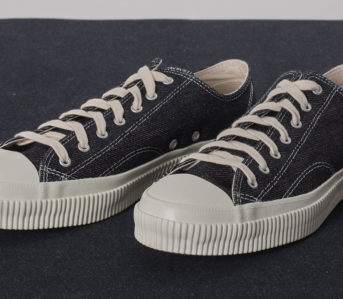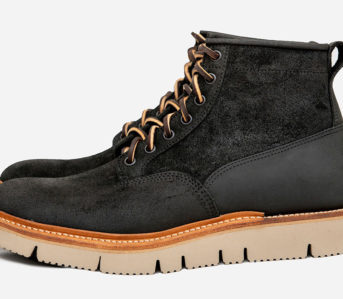From the decks of France’s naval fleet to high fashion catwalks and everywhere in between, there is no questioning the ubiquitous status of the Breton shirt. Like many other military garments, the Breton shirt has made the transition from utilitarian workwear to celebrated fashion staple. But behind every garment we know and love today is a story. So, today, we at Heddels are shining the spotlight on the Breton shirt to uncover just how this simple striped shirt became such a mainstay in male and female fashion.
Where & Why did the Breton Stripe Originate?
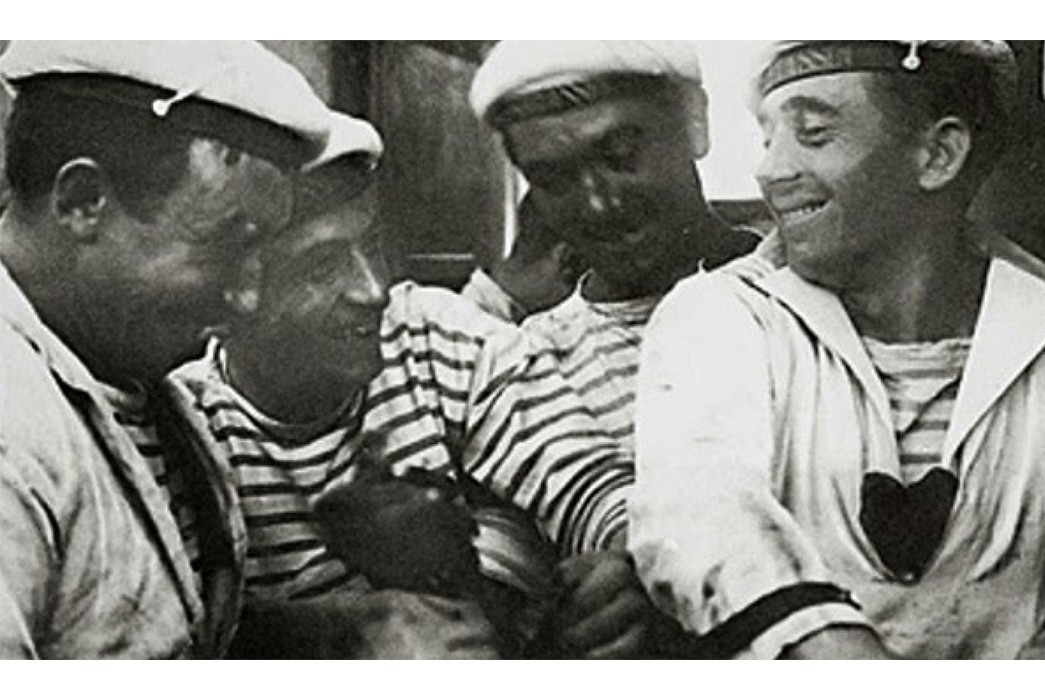
Image via Royal Museums Greenwich
The Breton shirt was introduced in France in 1858 when French parliament passed “The Act of France.” This new law saw the knitted striped jumpers become the new uniform for all French naval personnel stationed in North-western France. Originally known as a marinière, or Ricot Rayé, the Breton shirt got its name from the North-Western region of Britanny, where many major naval bases were located.
The first Breton shirts were made to very strict specifications. The French Navy mandated there to be 21 white stripes on the torso, measuring 20mm in width and 21 blue stripes of 10mm width. The sleeves were to have 15 white stripes and 14 to 15 blue stripes. However, as the years went by, these specs loosened slightly with the general rule of thumb being that the white stripes would be roughly double the thickness of the navy stripes.
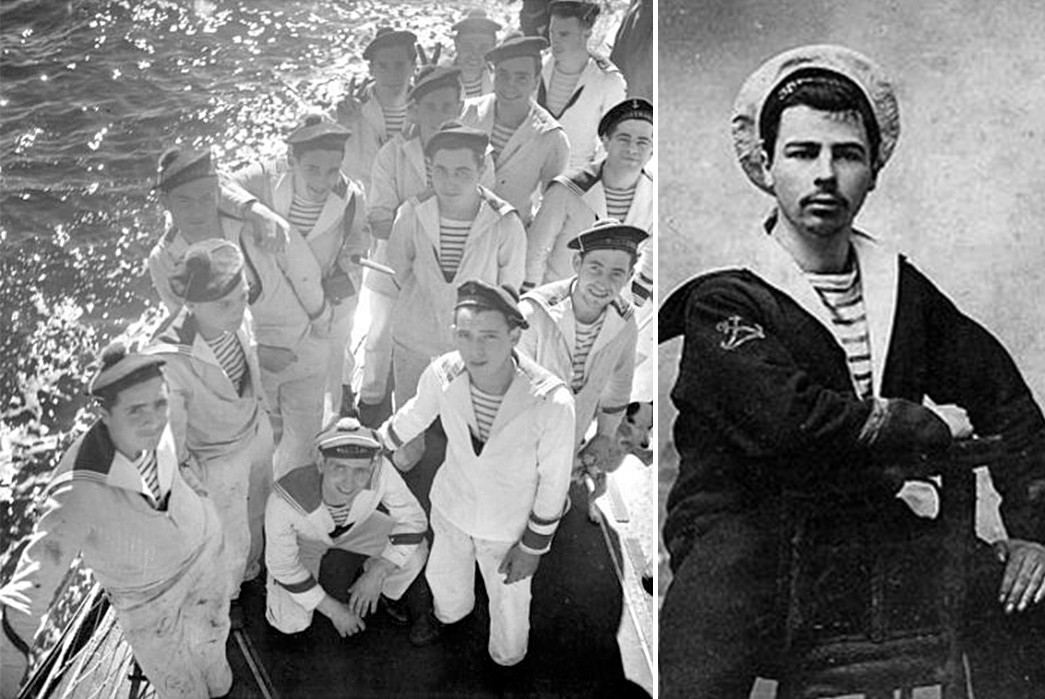
French Naval Servicemen via Pinterest & French WInk
The exact reasoning for this choice of military uniform is unknown, but some say these boldly striped knitted shirts were introduced for their high-visibility which helped crews spot any seamen who had fallen overboard. It is also rumoured that the ‘twenty-one’ stripes were in place to symbolize each of Napoleon’s naval victories against the British. Regardless of any lore, the Breton stripe jumper was easy to spot, comfortable – and warm – a quality most important for seamen braving the choppy seas.
Advancements in textile manufacturing also meant that the woollen Breton shirts could be tubular knit, which made for a durable garment with no side-seams that could be easily laundered without shrinkage. The lack of buttons also meant sailors were less susceptible to snagging themselves on nets or rigging. The Breton shirt was, in essence, a utilitarian masterpiece.
From the Cabins to Coastal Couture
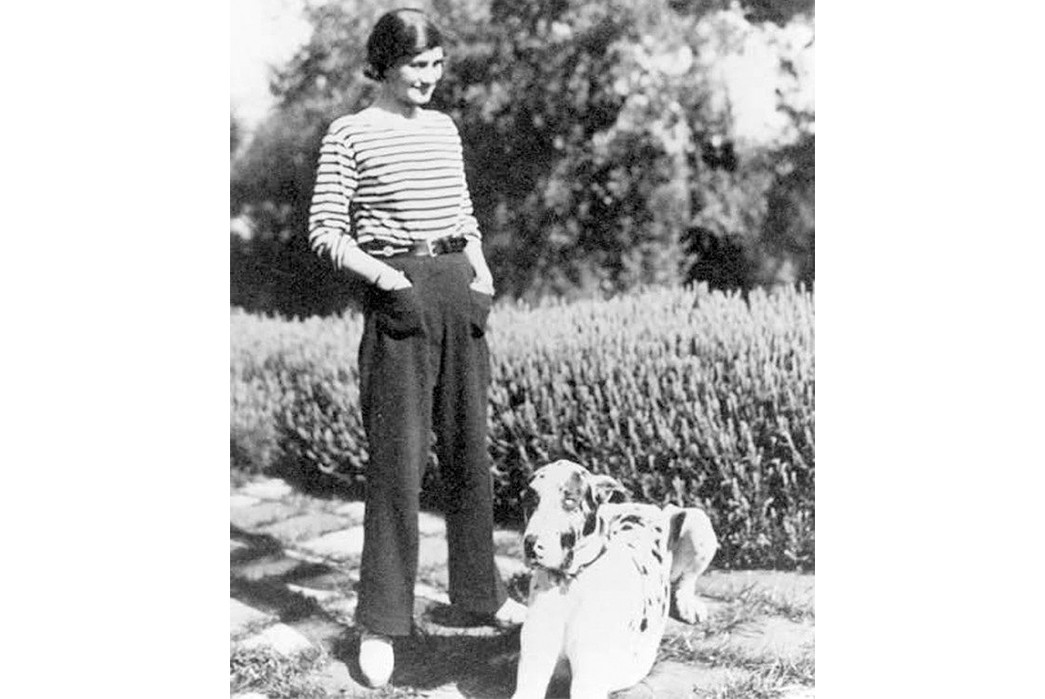
Coco Chanel in a Breton shirt via Pinterest.
Like many military garments, people outside of the service soon caught on to the Breton shirt. Fisherman, coastal tradesmen and seafarers across the north of France quickly adopted the Breton shirt, but it was by no means a fashion statement. It was not until the iconic French fashion designer, Coco Chanel, took notice that the Breton shirt would sail into the world of fashion.
After opening her successful boutique store in the coastal town of Deauville in 1913, Coco Chanel adopted the Breton shirt as a casual garment for seaside vacations around the coast of Normandy. With French brand Saint James having already established themselves as the main manufacturer of utilitarian Breton shirts in the late nineteenth century, Coco Chanel was the first to present the marinière as a piece of couture. Tee 1917 Chanel collection featured Breton stripes and many other nautical and coastal inspired pieces, which was a bold proposal in a time where women’s fashion was still very formal and corset-heavy.
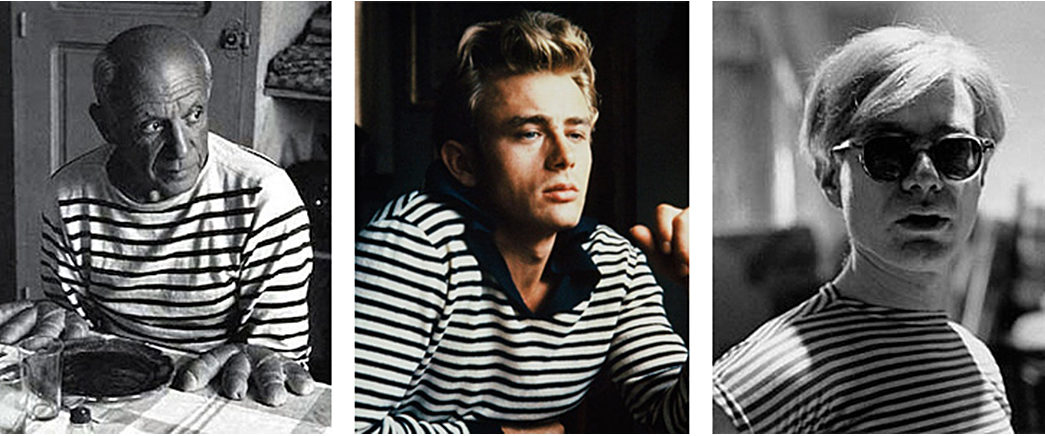
Pablo Picasso, James Dean, and Andy Warhol in Breton Shirts via M69 Barcelona
The Breton shirt’s transition into the fashion world was by no means gender-specific. The loose arms and wide neck made the Breton shirt easily compatible with unisex styling, allowing it to resonate with both men and women alike.
Coco Chanel may have pioneered the garment in womenswear, but men across the globe soon sported the Breton shirt as a fashion piece. Pablo Picasso famously donned Breton stripes, as well as the French poet and director, Jean Cocteau. These appearances of the Breton shirt on such avant-garde artists saw the Beatnik subculture of the late-fifties and early-sixties adopt the Breton shirt, as well as the Beret, another typically French piece.
Breton Shirts Today
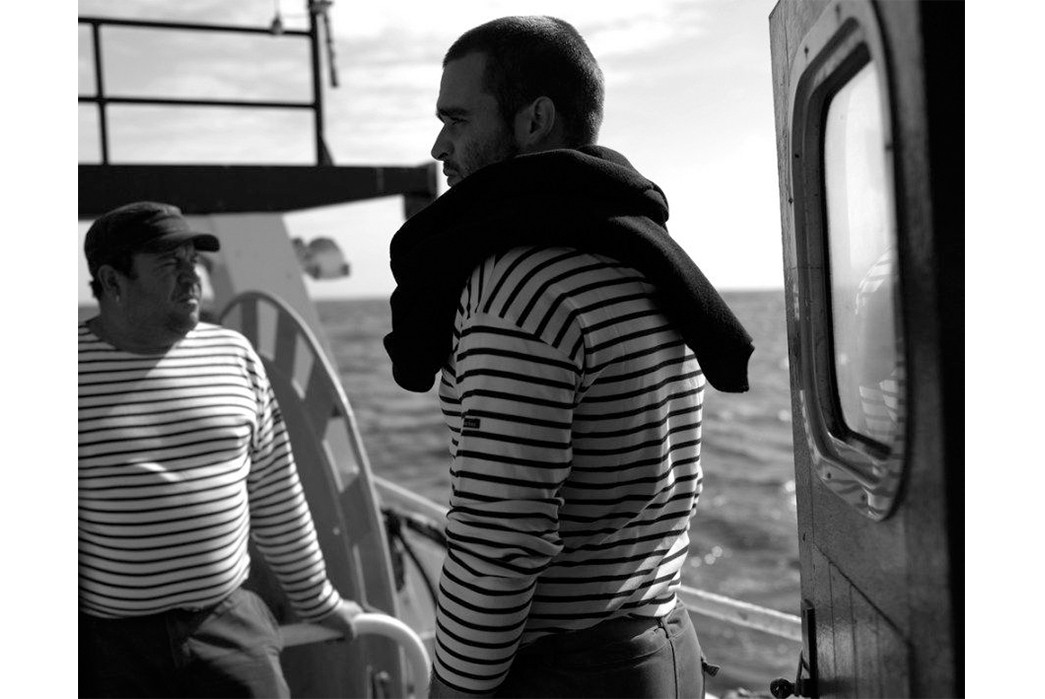
The Breton shirt slowly evolved into a fashion staple over the coming decades, with other producers such as Armor Lux pioneering the Breton stripe along with Saint James, incorporating it onto knitwear and cotton goods. Regardless of cut, neck-style, and stripe thickness – fast-fashion brands worldwide market many of their striped tops as “Breton”- so much so that the specs of the original Breton shirts have been somewhat lost and the term is now used to market anything with bold, slim stripes.
While many ‘Breton’ efforts may ignore the original specs, there are still some shirts available today that adhere to the same design as the Breton shirts which started this unmistakably gallic legacy all those years ago.
Examples of Breton Shirts Today
Saint James Unisex Breton Shirt
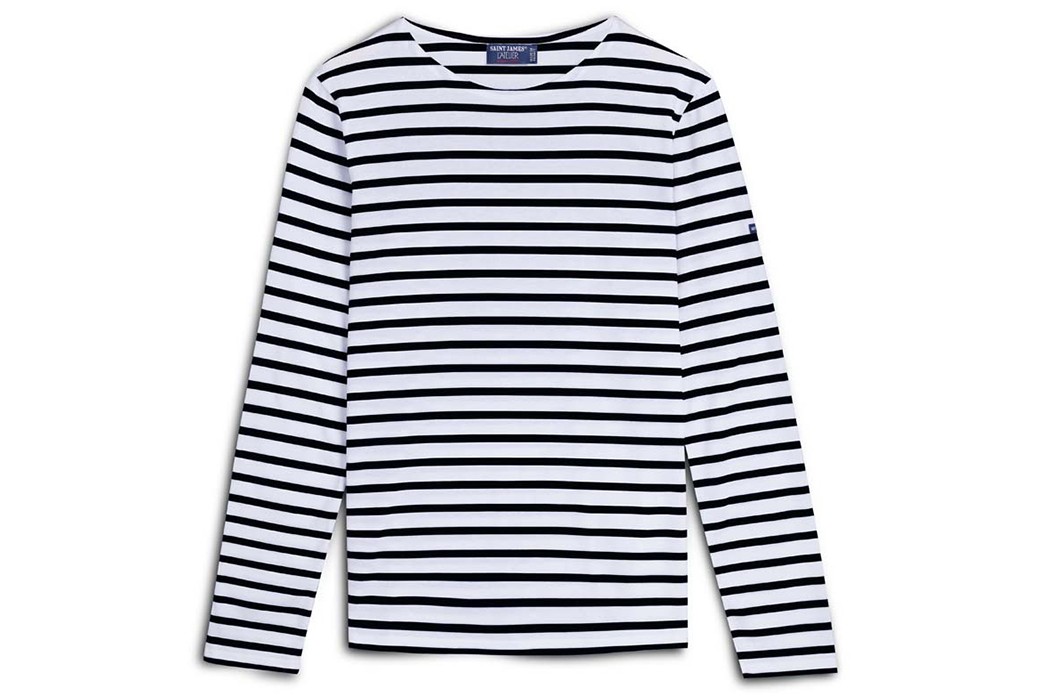
Image via Saint James
Saint James have been making striped shirts and knitwear since 1889, and became well known for their Breton shirts. Today, the French label is still making Breton shirts with the same aesthetic as those of the late-nineteenth century. Seen here in the authentic white and navy colorway, the Minquiers Mondern Authentic Stripe Breton shirt is constructed from knitted cotton with a straight, lightly fitted shape making it suitable for men and women. In addition, this archetypal piece features the traditional boat neck and a woven branded label on the left sleeve.
Available for $52.50 – $75 at Saint James.
Armor Lux Heritage Breton Stripe Shirt
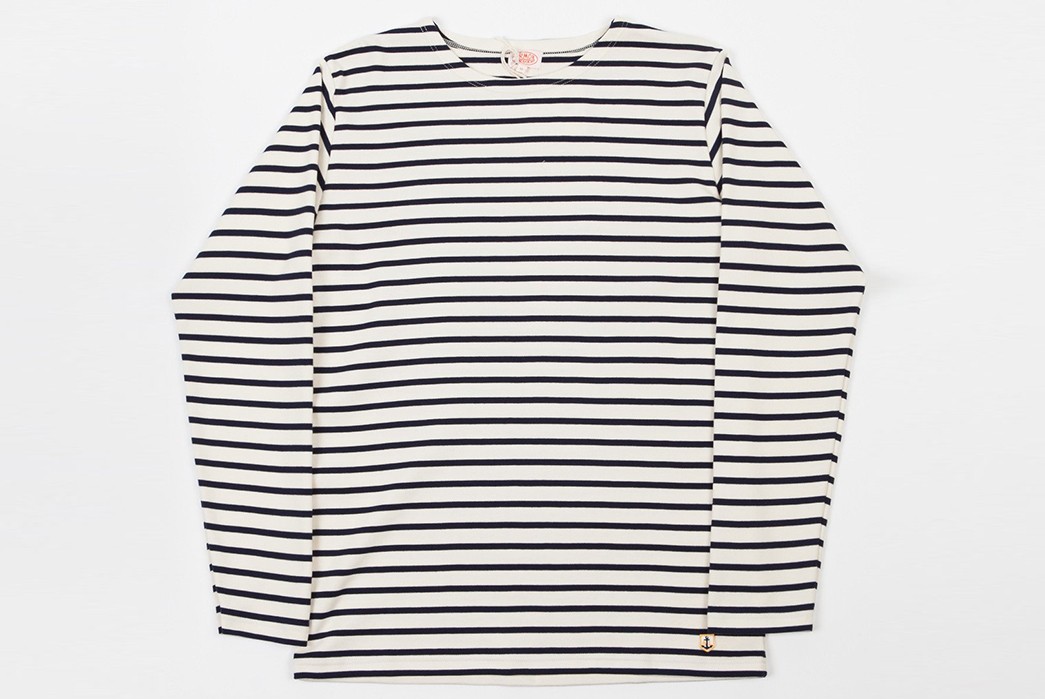
Image via Flatspot
Having been in the game since 1938, French label Armor Lux’ Breton shirts are also a solid reproduction of the traditional shirts worn by French sailors. Following the blueprint set out by Saint James, this knitted cotton Breton Stripe shirt by Armor Lux also features the authentic stripes, cuffless sleeves, and boat neck construction.
Available for $55 at Armor Lux.
Orcival Stripe Long Sleeve Tee
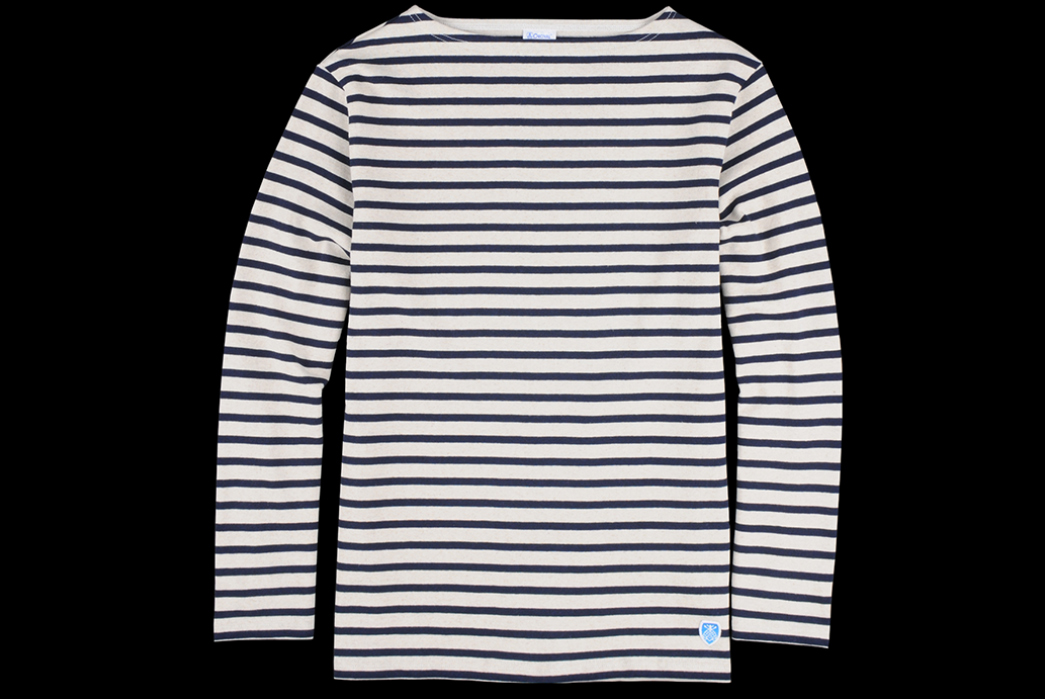
Opening their doors just one year after Armor Lux, Orcival is another French producer of Breton shirts who work to reproduce the same aesthetic as the nineteenth-century military originals. Seen here in a natural and marine color makeup, this Orcival Breton shirt is constructed from 100% jersey knit cotton and features the widest boat neck out of our Breton selection.
Available for $90 at Unionmade.

